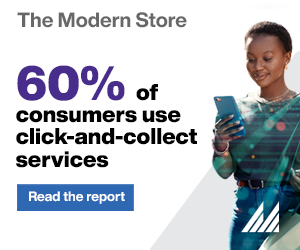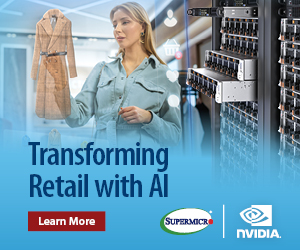AI isn’t just a chatbot
Neil Holden, co-founder at Ignite AI Partners and former Halfords chief information and data officer, argues that AI is the overlooked opportunity in retail operations
When people think about AI in retail, they usually picture things like chatbots, personalised offers, or clever tools that help with marketing. That’s the shiny thing; it’s visible, easy to imagine, and often where suppliers focus their attention.
But in our work with enterprise UK retailers, the most impactful changes are often tucked away in the background. We're talking about the day-to-day operations, data handling, and internal processes; the “unglamorous” things that keep everything running. Surprisingly, that’s where some of the biggest opportunities are hiding.
Retailers have a lot on their plates right now - rising costs, tighter margins, and pressure to deliver a better customer experience. Many are starting to explore AI, but in most cases, they’re only scratching the surface.
When we at Ignite AI Partners, a specialist retail AI consultancy, speak to operations, finance, or digital teams, they’re often genuinely surprised by what AI can actually do behind the scenes. We’ve seen teams automate supplier data entry, fix stock mismatches in minutes, or pull reports that used to take weeks all with tools they didn’t know were even an option.
One chief financial officer told us recently: “I always thought AI was something the marketing team used. I had no idea it could help us sort out stock issues or save time on spreadsheets.” That kind of thinking is still really common, and it means retailers are missing out on smarter, faster ways of working.
The hidden potential in the back office
AI isn’t just for flashy front-end tools; it’s incredibly useful behind the scenes too. In fact, some of the biggest improvements we’ve seen come from helping retailers sort out the day-to-day things that take up too much time and energy. Here are a few examples of what’s possible right now:
Cutting out manual data entry: Think about all those supplier documents, PDFs, and invoices. Instead of teams copying and pasting, AI can pull out the right info and drop it into the right systems automatically and faster, with fewer mistakes.
Keeping stock in sync: AI can check stock levels across your platforms, spot anything that doesn’t add up, and even flag what needs fixing before it becomes a problem.
Quick, useful reporting: Instead of waiting days for a report, AI can pull data from different systems, highlight what matters, and give you answers when you need them.
This isn’t theoretical. Retailers are already using AI to do this today, and it’s making a real difference.
Why it’s overlooked
So, why aren’t more retailers using AI like this behind the scenes?
Part of the problem is that AI is still often discussed as if it were just a marketing tool, something for personalisation or product recommendations. Most of the conversation has been focused on what the customer sees, not what’s happening in the background.
Then there’s the language. Buzzwords like machine learning or large learning models (LLMs) make it all sound more complicated than it really is.
Ultimately, many retailers lack a clear plan for where to begin. They might try out a few tools here and there, but without a joined-up view, it’s hard to know where AI will actually make a difference.
That’s why we started with ourAI Partner Diagnostic (AIPD) framework. It helps retailers figure out where AI can genuinely save time, reduce costs, and make life easier, starting with the pain points that matter most to them.
Reframing the conversation
To get the most out of AI, retailers need to start thinking about it a bit differently:
- It’s not just a chatbot or something for the digital team to play around with.
- It can actually help teams across the business, from ops and finance to supply chain and buying, allowing them to work smarter and faster.
- It’s also not just something huge global brands can afford. These tools are now available, and they’re already making a difference for retailers who take a fresh look at how they operate.
AI isn’t some distant idea anymore. It’s a practical way to fix the everyday problems that slow teams down, and in many cases, retailers don’t even realise how much of that can be improved until they see it for themselves.
If we can shift the focus away from just the shiny front-end tools and start looking at how AI can make life easier behind the scenes, that’s when the real value starts to show up.






